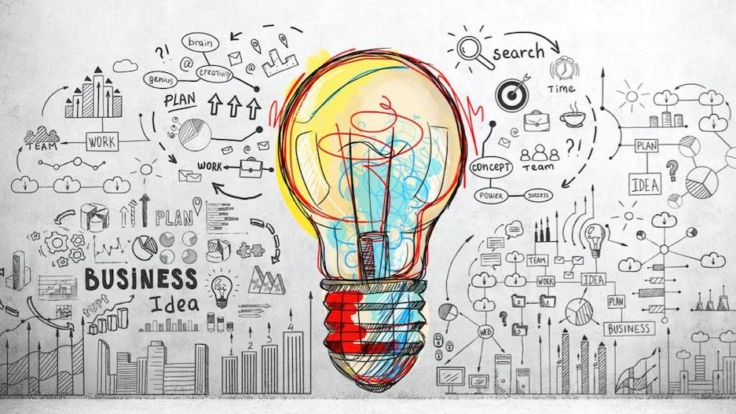Nithyakalyani Narayanan
An introduction to the concept of ‘Intellectual Property’
The term ‘Intellectual property’ can be simply described as the rights of the creation of a man. Patents, trademarks, copyright, etc are some of the examples.[1] Patents and undisclosed information are both forms of intellectual property that could be directly relevant to vaccines. The aim of patents is to protect inventions. A patent is granted for an invention as long as it is demonstrated that the invention passes the tests such as being new and involving an ‘inventive step’. In the past few years, there have been quite some debates on how intellectual property impacts medicines and vaccines.
The World Trade Organization, during the Uruguay Round Ministerial Meeting held in 1994 adopted the Marrakesh Declaration. They assist international trade in goods and services and provide a framework for negotiating trade agreements and dispute resolution processes among member nations. The declaration established 16 multilateral and 4 plurilateral Uruguay Round Agreements. While the multilateral agreements, including the Trade-Related Intellectual Property Rights (TRIPS) Agreement, are binding on all member nations of the organization, the plurilateral agreements are binding only between signatories thereof.[2] The TRIPS Agreement lays down a minimum standard for the regulation by the member nations of intellectual property like copyright, patents, trade secrets, etc as applied to nations of other member nations and is the most comprehensive multilateral agreement on intellectual property.
The Agreement requires its member nations to provide patent-protection for their inventions, whether it is for a product or for a process, for minimum of 20 years on a non-discrimination basis. They are ordered to publish rules and regulations which are used for intellectual property protection and send notifications to the Council of TRIPS, which will allow the members to analyze each other’s legislation and through which, to promote transparency of nations’ policies. The member nations have the right to refuse the grant of patent rights so as to prevent the commercial exploitation of the inventions. Keeping in mind the needs of developing countries and their public health concerns, certain cooperative methods are incorporated in the agreement so as to implement the IP rules on pro-public health.
Scenario during the pandemic
The COVID-19 pandemic has been a humanitarian crisis and has been extremely unpredictable. From going through n-number of lockdowns, wiping out supermarkets, masks, and sanitizers becoming a part of life to developing vaccines, every step has been unforeseeable and completely new. No human had prepared for such a global event. But the human tendency to cope up with changes and come up with methods to ease up life won here and had faith in getting a vaccine. Although things look bright on one side, the pandemic had its own consequences that have affected the people one way or the other. The world lost the lives of about 26 lakh people and it is only increasing.[3] Many nations took a hard hit on their economic stability and as the situation demanded more dependency on the internet, certain cyber issues popped up as well. Although the dubiousness regarding the authenticity of the vaccine is still a debatable topic, the majority of society, especially the youth, highly supported the process.
Globally, specifically in the United States, patents provide incentives for the creation of medicines and vaccines and protect the creators’ investments of time and resources. Some people have pointed out their concerns regarding the protection of Intellectual Property for the vaccine and how it would inhibit their innovation or availability. The concerned people state that IP protection will be vital to the progress of innovative treatments, tests, and vaccines. So as to make sure countries get a hand on the vaccines, medicines, etc concerning the eradication of COVID-19, regardless of the capital of the nations and to prevent the monopoly of the rich during such a crisis, India along with South Africa submitted a proposal to the World Trade Organization to suspend the IP rights. But the wealthy countries and the medical industry do not support the statement and stated that it will restrain development at a time when a solution is needed the most.[4] The proposition that was put forward stated that intellectual property rights like patents are hindering the nations to afford COVID-19 medical reinforcements. A temporary ban would allow multiple other enterprises to start production, preventing the manufacture from being concentrated only with the patent holders. Many of the less capitalized nations are in favor of the statement. But many countries like the UK, the US, Canada, and the European Union discarded it stating that the IP rights are required to bring up new vaccines and treatments. It was stated that fair access can be accessed only through voluntary licensing technology transfer arrangements, and the donor-funded COVAX Advance Market Commitment for vaccines.
Pros and cons
By granting exclusive rights to a single hand, the accessibility and the development of the vaccines are tougher to be tackled. But the patents aren’t restricted ,i.e, the government of respective countries has the power to mandatorily take the license of the invention. For instance, the Australian Government has provided a provision in its patent legislation that grants the authority to create, use and sell a patented invention for the purpose of serving the Commonwealth or the State.[5] This option is available only when there is a patent to override.
But when checking the authenticity of a medicine or a vaccine, the patent approval can come across as a benchmark. So as to get a patent, the inventor must disclose the details of his invention. As long as there is no patent, the creator need not disclose the details of the innovation as well. But even if the information is disclosed, not every country has the capital and/or efficiency to create the vaccine. Hence the nations that can create must mass-produce and ship to those nations at a subsidized rate. But at times, the corrupt nations might take advantage of the people and make the commoners pay a higher price and the shipped vaccine can be further exported to richer countries for a higher price. The presence of patents can prevent this loss as they have strict laws regarding the exportation of such items.
[1] Jayashree Watal, “Intellectual Property Rights in the WTO and Developing Countries”, Kluwer Law International, 2001.
[2] Ashok Dhingra, India: Waiver Under The TRIPS Agreement Amid COVID-19, https://www.mondaq.com/india/operational-impacts-and-strategy/1022538/waiver-under-the-trips-agreement-amid-covid-19.
[3] World Health Organization, https://covid19.who.int/?gclid=CjwKCAjw19z6BRAYEiwAmo64La97ZNDqTcnNUT5MPxavr4SIf85aCVj8xq5-EdVX9lqXnd3xyZXqXxoCUcoQAvD_BwE
[4] Ann Danaiya Usher, South Africa and India push for COVID-19 patents ban, https://www.thelancet.com/journals/lancet/article/PIIS0140-6736(20)32581-2/fulltext
[5] Australian Law Reform Commission, https://www.alrc.gov.au/publication/genes-and-ingenuity-gene-patenting-and-human-health-alrc-report-99/26-crown-use-and-acquisition/crown-use/
Disclaimer: The views and opinions expressed in the articles on this website are those of the authors and do not necessarily reflect or represent the views and opinions held by the website owner.

